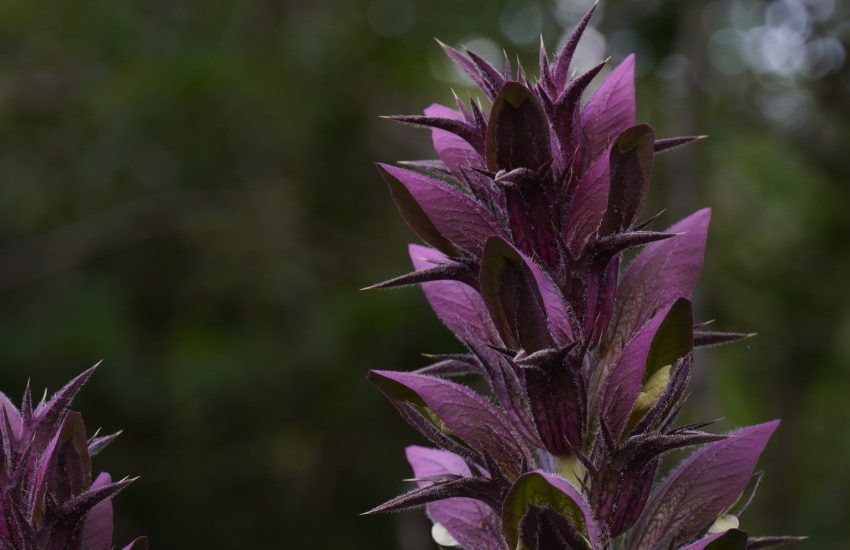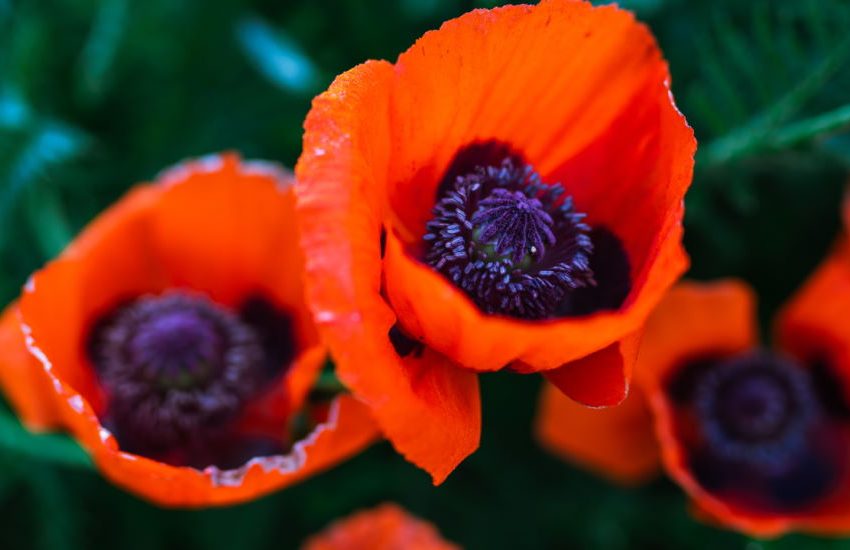Choosing Perennials for Color: Expert Tips to Brighten Your Garden Year-Round
Choosing perennials for color means picking plants that keep blooming and work well with your garden’s vibe. Focus on when they flower, how bold the colors are, and how those shades play with everything else you’ve got growing.
The best perennials for color give you long blooms, bright shades, and mesh nicely with other garden elements.
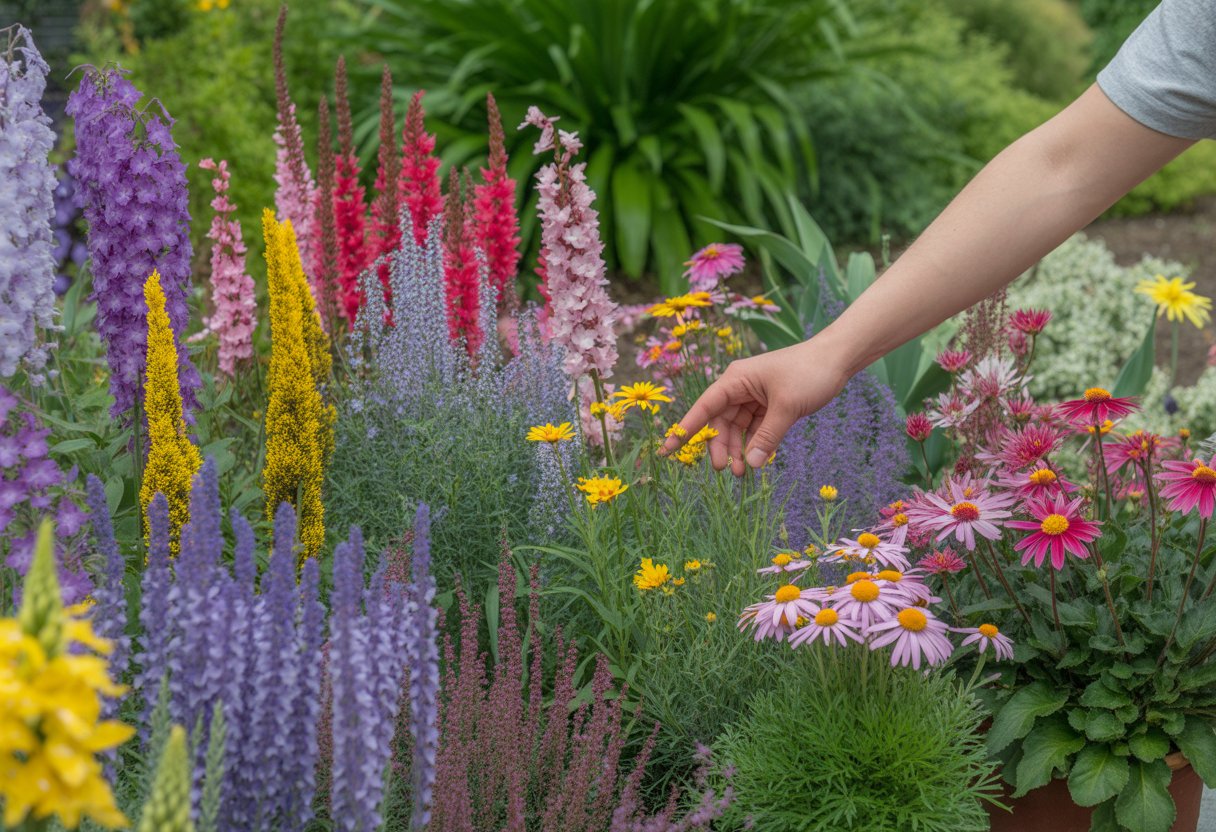
Don’t forget to look at your light and soil situation—plants need the right conditions to really shine. Mixing up species with different bloom times keeps things lively and colorful all season.
Understanding Perennials for Vibrant Color
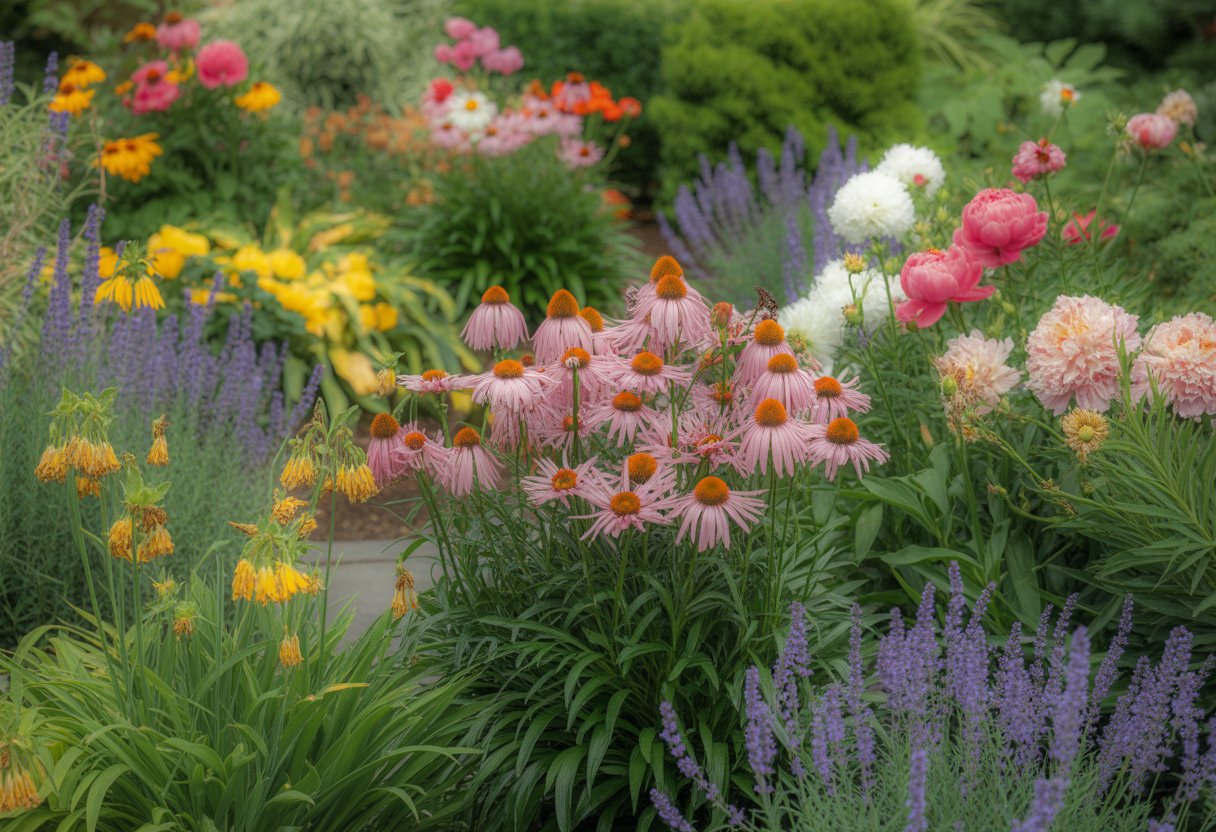
Picking the right perennials means knowing how they grow, when they flower, and how their colors mix together. It helps to think about plant types, bloom times, and the way colors shift as the seasons change.
Defining Perennial Plants
Perennials stick around for more than two years and come back from their roots each season. Unlike annuals, you don’t have to replant them every year, so they’re a solid foundation for your garden.
They’ve got their own blooming schedules—some flower for just a few weeks, others for months. Many, like those with continuous bloom, stretch out their color and keep things interesting.
If you mix perennials with different bloom times, you’ll get overlapping flower color and fewer dull patches. That’s the trick to a garden that looks alive from spring right through to fall.
Color Theory in Garden Design
Color theory actually comes in handy here. The color wheel helps you pair flowers—opposites like red and green pop with contrast, while neighbors like blue and purple feel more chill and blended.
Warm shades (reds, oranges) bring energy, while cool tones (blues, purples) calm things down. Mixing both keeps the garden from feeling too busy or too flat.
Think about how strong a color is, too. Bold flowers can anchor a spot, while pastels soften things up. Playing with these choices can set the mood and draw the eye.
Seasonal Color Considerations
Perennials don’t all bloom at the same time, so you’ve got to plan for color that lasts. Kick things off with early spring bloomers like bleeding hearts, then move to summer standouts like coneflowers, and finish with fall favorites like asters.
When the flowers fade, leaf color and texture step in to keep the garden looking good. Some plants even offer winter interest with their seed heads or lasting foliage.
As the seasons roll by, your garden’s colors will shift. Knowing what blooms when helps you keep the show going.
Selecting the Best Perennials for Color Impact
If you want real color impact, balance the bloom shades, plant textures, and what your yard can handle. Look at flower types, leaf shapes, and how each plant reacts to sun and soil. Mixing perennials and annuals keeps things popping all season.
Popular Perennials for Colorful Blooms
Coneflower, black-eyed Susan, and coreopsis are classics for bright yellows and purples. Echinacea brings pinks and purples with sturdy blooms.
Salvias and russian sage add cool blues and lavenders for contrast. They stick around for a while and attract pollinators, which is always a bonus.
Catmint handles sun or partial shade and offers soft blue-purple flowers that mix in easily. It keeps its color through summer, so it’s a dependable pick.
Incorporating Texture and Foliage
Texture matters—it gives your garden more depth. Coral bells show off with bold leaves in red, purple, or even lime green.
Lamb’s ear feels soft, almost fuzzy, and its pale leaves bounce light around, pairing well with darker blooms. Hosta leaves, whether smooth or crinkled, add interest in shady spots.
Evergreen foliage sticks around all year, keeping the garden structured. Mixing up leaf shapes and textures makes things a lot more dynamic.
Choosing by Light and Soil Conditions
A lot of colorful perennials, like black-eyed Susan and coreopsis, need full sun to really bloom. Shade lovers like hosta and some coral bells do well under trees, though their flowers are usually more subtle.
Soil matters—a lot. Most perennials want well-drained soil, but a few can handle wetter spots. Match your plant choices to your microclimate for better color and healthier growth.
Blending Annuals and Perennials
Annuals can fill in the color gaps when perennials take a break. They bring bold, quick color and keep things lively.
Use perennials like echinacea and salvias for a steady backdrop. Then tuck annuals in near them for extra pops of color.
This mix keeps the garden vibrant all season, balancing the steady presence of perennials with the flashiness of annuals.
Designing a Perennial Garden with Year-Round Color
If you want color all year, timing and structure are everything. Pick plants that bloom one after another, play with different heights and colors, and don’t forget to add stuff that still looks good in winter.
Planning for Continuous Bloom
To keep color going, choose perennials that bloom at different times. Early bloomers like Corydalis and Hepatica kick off spring, while summer stars like Echinacea and Rudbeckia carry it forward. In fall, asters and chrysanthemums finish the show.
A simple bloom calendar helps you plan. Grasses like Panicum and Miscanthus add movement and texture late in the season. Mixing lots of species means fewer dull spots and more color from spring through fall.
Layering Colors and Plant Heights
Layers make a garden feel more alive. Tall perennials like Delphinium or Joe-Pye Weed build the backdrop. Medium ones—think Salvia or Coreopsis—fill the middle, and low growers like Sedum anchor the front.
Mixing cool and warm tones keeps things interesting. Groups of three or five plants look more natural. Putting late bloomers behind early ones helps with transitions and keeps the color flowing.
Creating Winter Interest
Winter doesn’t have to be boring. Ornamental grasses like Panicum virgatum hold their seed heads and offer structure after frost.
Some perennials keep seed heads or interesting leaves through winter. Add evergreen shrubs or conifers for steady green, and look for plants with cool bark, like Cornus (dogwood), for a splash of color even in the cold. Sometimes, even snow adds a nice contrast and highlights the garden’s shapes.
Caring for Colorful Perennials
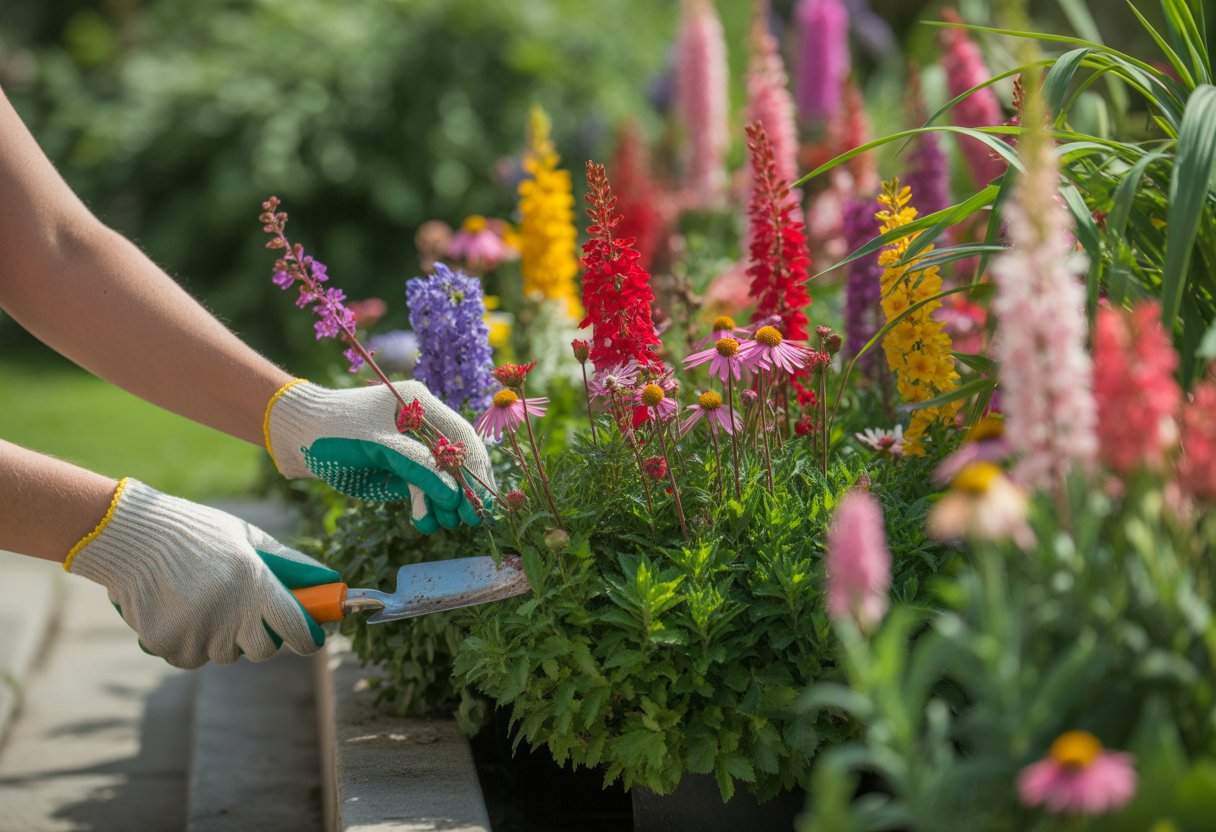
Keeping perennials vibrant takes some regular care—think watering, soil health, and pest management. Good habits help your plants keep blooming and avoid problems like wilting or disease.
Essential Perennial Care Practices
Water deeply but not too often—this gets roots to grow deeper and helps plants handle dry spells. Most perennials want about an inch of water each week, from rain or a hose.
Healthy soil matters for good color and strong blooms. Toss in compost to improve drainage and add nutrients. A slow-release fertilizer in early spring gives them a boost.
Keep an eye out for pests and diseases. Aphids can mess with blooms, but regular checks and a little insecticidal soap or horticultural oil will help.
Deadheading and Pruning for Maximum Color
Deadheading (removing spent flowers) pushes plants to make more blooms instead of seeds. Snip off wilted flowers every week or two—especially on things like coneflowers and black-eyed Susans—for a longer show.
Pruning shapes the plant and helps air move through, cutting down on fungus. Trim back leggy or damaged stems just above a leaf to encourage bushier growth.
Some perennials, like phlox and salvia, really benefit from a midseason trim for a second round of flowers. Always use clean, sharp tools—that way you don’t spread disease while you’re at it.
Sustainable Gardening Tips
Mulching around perennials keeps moisture in the soil and blocks out pesky weeds. It also helps the ground stay at a steady temperature.
Try spreading a 2-3 inch layer of organic mulch—shredded bark or straw usually works great.
If you go for drought-tolerant species and native plants, you’ll cut down on watering and give local wildlife a hand. Grouping plants with similar water needs just makes sense and saves resources.
Skip the synthetic chemicals whenever you can. Natural pest controls and integrated pest management might take a little more effort, but you’re doing the planet a favor and your perennials will thank you.

